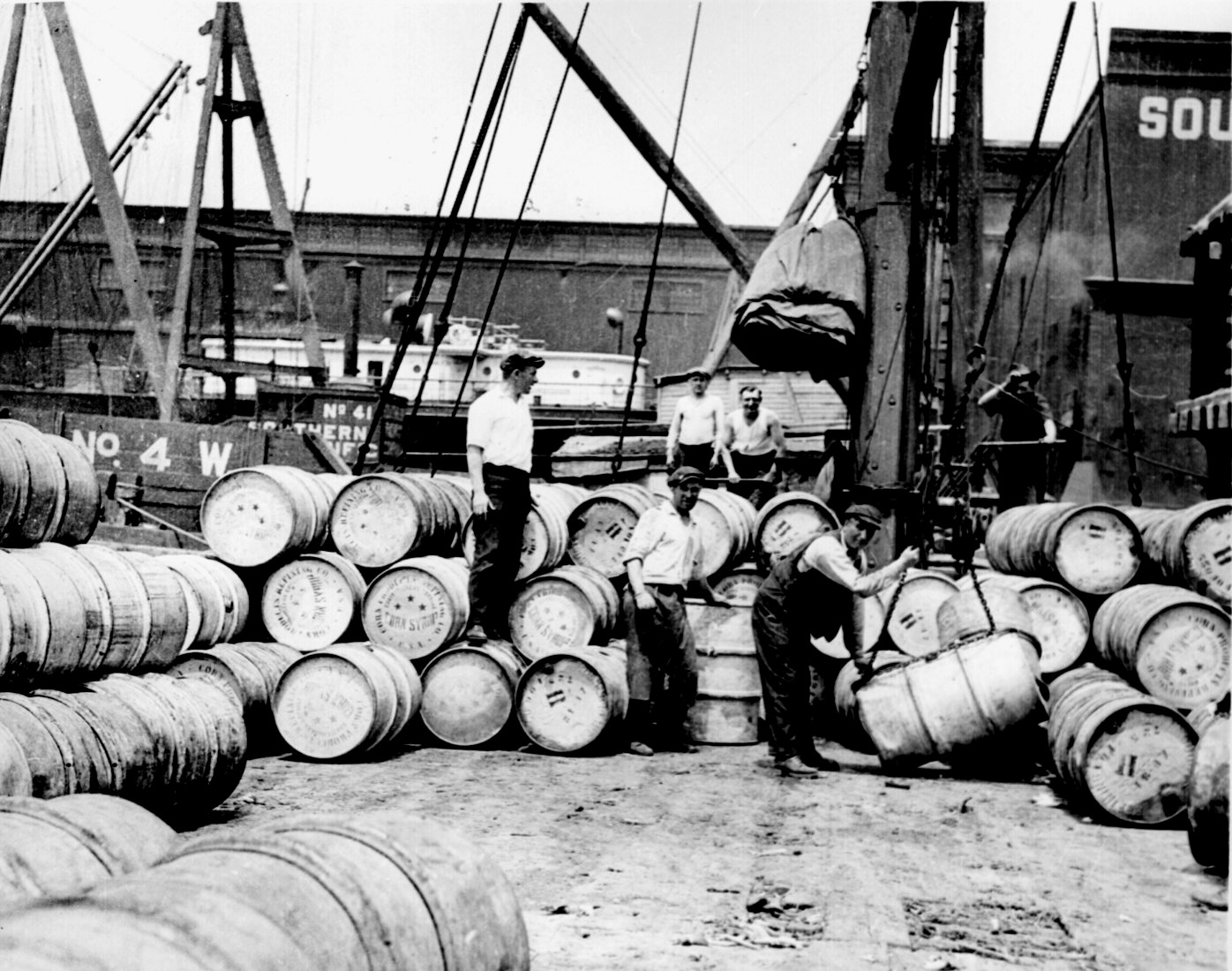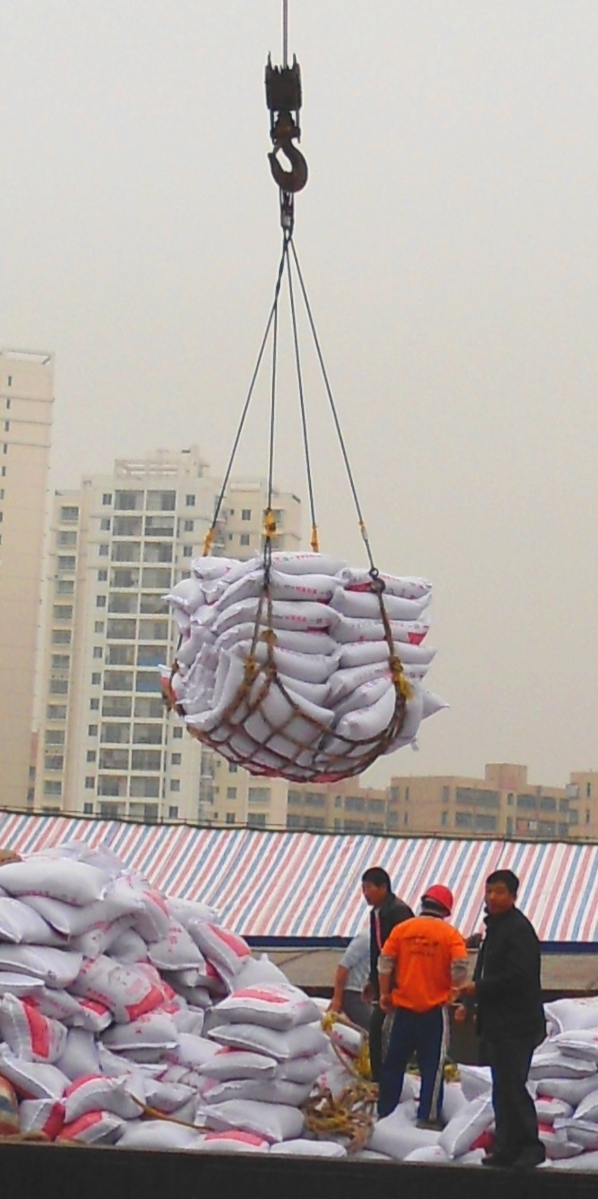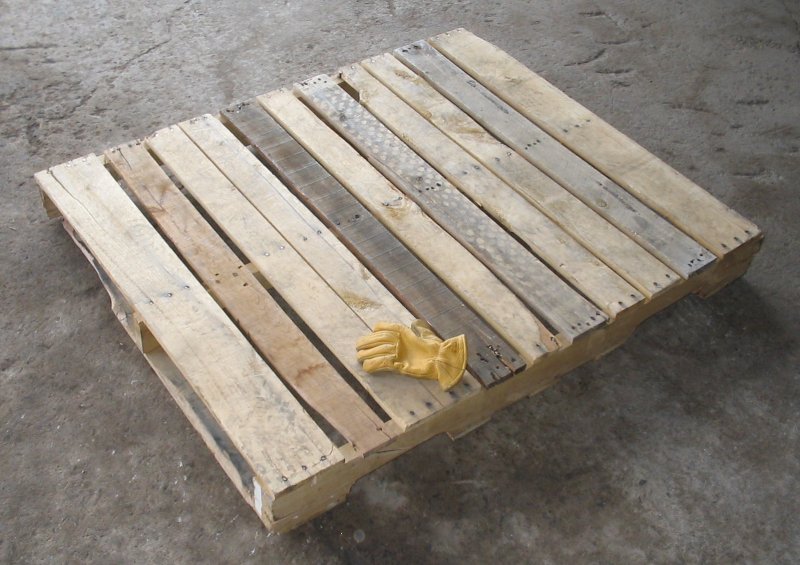|
Cargo
Cargo consists of bulk goods conveyed by water, air, or land. In economics, freight is cargo that is transported at a freight rate for commercial gain. ''Cargo'' was originally a shipload but now covers all types of freight, including transport by rail, van, truck, or intermodal container. The term cargo is also used in case of goods in the cold-chain, because the perishable inventory is always in transit towards a final end-use, even when it is held in cold storage or other similar climate-controlled facility. The term freight is commonly used to describe the movements of flows of goods being transported by any mode of transportation. Multi-modal container units, designed as reusable carriers to facilitate unit load handling of the goods contained, are also referred to as cargo, especially by shipping lines and logistics operators. Similarly, aircraft ULD boxes are also documented as cargo, with an associated packing list of the items contained within. When empty c ... [...More Info...] [...Related Items...] OR: [Wikipedia] [Google] [Baidu] |
Unit Load Device
A unit load device (ULD) is a container used to load luggage, freight, and mail on wide-body aircraft and specific narrow-body aircraft. It allows preloading of cargo, confidence the containerised load will fit in the aircraft and efficient planning of aircraft weight and balance and reduced labour and time in loading aircraft holds compared with 'bulk-loading' single items of cargo or luggage by hand. Each ULD has its own packing list or manifest so that its contents can be tracked. A loaded aircraft cargo pallet secured with a cargo net also forms a ULD, but its load must be gauged for size in addition to being weighed to ensure aircraft door and hold clearances. The IATA publishes ULD regulations and notes there are 900,000 in service worth more than US$1 billion, averaging $ each. Types ULDs come in two forms: pallets and containers. ULD pallets are rugged sheets of aluminium with rims designed to lock onto cargo net lugs. ULD containers, also known as cans and pods, a ... [...More Info...] [...Related Items...] OR: [Wikipedia] [Google] [Baidu] |
Cargo Tricycle In Stockholm
Cargo consists of bulk goods conveyed by water, air, or land. In economics, freight is cargo that is transported at a freight rate for commercial gain. ''Cargo'' was originally a shipload but now covers all types of freight, including transport by rail, van, truck, or intermodal container. The term cargo is also used in case of goods in the cold-chain, because the perishable inventory is always in transit towards a final end-use, even when it is held in cold storage or other similar climate-controlled facility. The term freight is commonly used to describe the movements of flows of goods being transported by any mode of transportation. Multi-modal container units, designed as reusable carriers to facilitate unit load handling of the goods contained, are also referred to as cargo, especially by shipping lines and logistics operators. Similarly, aircraft ULD boxes are also documented as cargo, with an associated packing list of the items contained within. When empty contain ... [...More Info...] [...Related Items...] OR: [Wikipedia] [Google] [Baidu] |
Break Bulk Cargo
In shipping, break-bulk, breakbulk, or break bulk cargo, also called general cargo, refers to goods that are stowed on board ship in individually counted units. Traditionally, the large numbers of items are recorded on distinct bills of lading that list them by different commodities. This is in contrast to cargo stowed in modern intermodal containers as well as bulk cargo, which goes directly, unpackaged and in large quantities, into a ship's hold(s), measured by volume or weight (for instance, oil or grain). The term ''break-bulk'' derives from the phrase breaking bulk, a term for unloading part of a ship’s cargo, or commencing unloading the cargo. Ships carrying break-bulk cargo are often called general cargo ships. Break-bulk/general cargo consists of goods transported, stowed and handled piecemeal to some degree, typically bundled somehow in unit loads for hoisting, either with cargo nets, slings, or crates, or stacked on trays, pallets or skids. Furthermore, batches ... [...More Info...] [...Related Items...] OR: [Wikipedia] [Google] [Baidu] |
Containerization
Containerization is a system of intermodal freight transport using intermodal containers (also called shipping containers and ISO containers). Containerization is also referred as "Container Stuffing" or "Container Loading", which is the process of unitization of cargoes in exports. Containerization is the predominant form of unitization of export cargoes, as opposed to other systems such as the barge system or palletization. The containers have standardized dimensions. They can be loaded and unloaded, stacked, transported efficiently over long distances, and transferred from one mode of transport to another—container ships, rail transport flatcars, and semi-trailer trucks—without being opened. The handling system is completely mechanized so that all handling is done with cranes and special forklift trucks. All containers are numbered and tracked using computerized systems. Containerization originated several centuries ago but was not well developed or widely applied ... [...More Info...] [...Related Items...] OR: [Wikipedia] [Google] [Baidu] |
Intermodal Container
An intermodal container, often called a shipping container, is a large standardized shipping container, designed and built for intermodal freight transport, meaning these containers can be used across different modes of transport – from ship to rail to truck – without unloading and reloading their cargo. Intermodal containers are primarily used to store and transport materials and products efficiently and securely in the global containerized intermodal freight transport system, but smaller numbers are in regional use as well. These containers are known under a number of names. Based on size alone, up to 95% of intermodal containers comply with ISO standards, and can officially be called ISO containers. Many other names are simply: container, cargo or freight container, shipping, sea or ocean container, container van or sea van, sea can or C can, or MILVAN, SEAVAN, or RO/RO. The also used term CONEX (Box) is technically incorrect carry-over usage of the name of an importa ... [...More Info...] [...Related Items...] OR: [Wikipedia] [Google] [Baidu] |
Intermodal Container
An intermodal container, often called a shipping container, is a large standardized shipping container, designed and built for intermodal freight transport, meaning these containers can be used across different modes of transport – from ship to rail to truck – without unloading and reloading their cargo. Intermodal containers are primarily used to store and transport materials and products efficiently and securely in the global containerized intermodal freight transport system, but smaller numbers are in regional use as well. These containers are known under a number of names. Based on size alone, up to 95% of intermodal containers comply with ISO standards, and can officially be called ISO containers. Many other names are simply: container, cargo or freight container, shipping, sea or ocean container, container van or sea van, sea can or C can, or MILVAN, SEAVAN, or RO/RO. The also used term CONEX (Box) is technically incorrect carry-over usage of the name of an importa ... [...More Info...] [...Related Items...] OR: [Wikipedia] [Google] [Baidu] |
Cargo Net
A cargo net is a type of net. It is usually square or rectangle, but sometimes round, made of thick rope, with cinch ropes extending from the corners, and in some designs, the edges. It is named for its use in transferring cargo to and from ships. Uses Cargo transfer In shipping, cargo ''lift'' nets are used to load and unload cargo. The net is spread out by stevedores, who load the goods onto it. They then attach the cinches to a crane hook. Lifting the hook draws the corners of the net around the cargo. This results in a balanced and secure load which can be safely hoisted. Goods are transferred from one place to another in the construction industry using cargo nets. When used to transfer cargo by helicopter, they are referred to as "underslung" cargo nets. Securing loads Cargo nets are used by the military, and in the shipping industry, to secure loads to prevent them from shifting during transport, as well as to deter theft. Obstacle courses As part of obstacle courses, ... [...More Info...] [...Related Items...] OR: [Wikipedia] [Google] [Baidu] |
Port
A port is a maritime facility comprising one or more wharves or loading areas, where ships load and discharge cargo and passengers. Although usually situated on a sea coast or estuary, ports can also be found far inland, such as Hamburg, Manchester and Duluth; these access the sea via rivers or canals. Because of their roles as ports of entry for immigrants as well as soldiers in wartime, many port cities have experienced dramatic multi-ethnic and multicultural changes throughout their histories. Ports are extremely important to the global economy; 70% of global merchandise trade by value passes through a port. For this reason, ports are also often densely populated settlements that provide the labor for processing and handling goods and related services for the ports. Today by far the greatest growth in port development is in Asia, the continent with some of the world's largest and busiest ports, such as Singapore and the Chinese ports of Shanghai and Ningbo ... [...More Info...] [...Related Items...] OR: [Wikipedia] [Google] [Baidu] |
Pallet
A pallet (also called a skid) is a flat transport structure, which supports goods in a stable fashion while being lifted by a forklift, a pallet jack, a front loader, a jacking device, or an erect crane. A pallet is the structural foundation of a unit load, which allows handling and storage efficiencies. Goods in shipping containers are often placed on a pallet secured with strapping, stretch wrap or shrink wrap and shipped. Since its invention in the twentieth century, its use has dramatically supplanted older forms of crating like the wooden box and the wooden barrel, as it works well with modern packaging like corrugated boxes and intermodal containers commonly used for bulk shipping. In addition, pallet collars can be used to support and protect items shipped and stored on pallets. While most pallets are wooden, pallets can also be made of plastic, metal, paper, and recycled materials. Overview Containerization for transport has spurred the use of pallets be ... [...More Info...] [...Related Items...] OR: [Wikipedia] [Google] [Baidu] |
Bulk Cargo
Bulk cargo is commodity cargo that is transported unpackaged in large quantities. Description Bulk cargo refers to material in either liquid or granular, particulate form, as a mass of relatively small solids, such as petroleum/ crude oil, grain, coal, or gravel. This cargo is usually dropped or poured, with a spout or shovel bucket, into a bulk carrier ship's hold, railroad car/ railway wagon, or tanker truck/ trailer/ semi-trailer body. Smaller quantities can be boxed (or drummed) and palletised; cargo packaged in this manner is referred to as breakbulk cargo. Bulk cargo is classified as liquid or dry. The Baltic Exchange is based in London and provides a range of indices benchmarking the cost of moving bulk commodities, dry and wet, along popular routes around the seas. Some of these indices are also used to settle Freight Futures, known as FFA's. The most famous of the Baltic indices is the Baltic Dry Indices, commonly called the BDI. This is a derived functi ... [...More Info...] [...Related Items...] OR: [Wikipedia] [Google] [Baidu] |
Truck
A truck or lorry is a motor vehicle designed to transport cargo, carry specialized payloads, or perform other utilitarian work. Trucks vary greatly in size, power, and configuration, but the vast majority feature body-on-frame construction, with a cabin that is independent of the payload portion of the vehicle. Smaller varieties may be mechanically similar to some automobiles. Commercial trucks can be very large and powerful and may be configured to be mounted with specialized equipment, such as in the case of refuse trucks, fire trucks, concrete mixers, and suction excavators. In American English, a commercial vehicle without a trailer or other articulation is formally a "straight truck" while one designed specifically to pull a trailer is not a truck but a " tractor". The majority of trucks currently in use are still powered by diesel engines, although small- to medium-size trucks with gasoline engines exist in the US, Canada, and Mexico. The market-share of electrica ... [...More Info...] [...Related Items...] OR: [Wikipedia] [Google] [Baidu] |






.jpg)




.jpg)